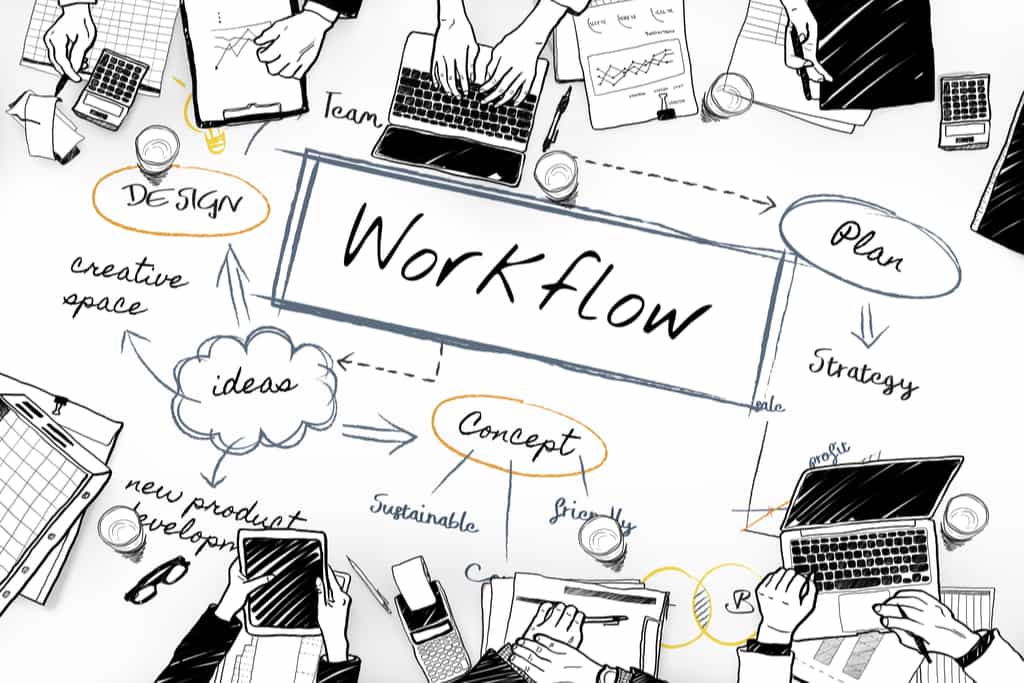Workflow automation software is helping knowledge workers automate tedious and repetitive tasks. These time-consuming actions include scheduling, email, payroll, team communication, social media posts, and other areas. Out of those utilizing workflow automation, marketers take the prize as having accrued the most time-savings, found by a recent Zapier report.
Zapier, the no-code app connector, recently conducted a study on how workers leverage workflow tools, revealing some interesting indications of how workflow automation is being adopted in practice. The study found that over half of knowledge workers use workflow tools daily, reaping rewards like increased productivity, reduced errors, and improved customer service. Below, I’ll review the key findings from the report to dive deeper into the rise of workflow automation technologies.
Who Is Using Workflow Automation?
New low-code/no-code integration platforms are enabling everyone from sales representatives to HR and accountants to sync up multiple business applications to program more intelligent procedures. So, which job roles benefit the most from automating their workflows? Well, customer service representatives are estimated to save 16 hours per week using automation. The study also tracked the saved time accrued for HR professionals (8 hours/week), sales representatives (6 hours/week), and accountants (4 hours/week).
But, of all digital workers, marketers take the prize as having saved the most time via workflow tools. It averages about 25 hours saved each week. This is likely due to juggling many small web-based applications and the intrinsically interconnected nature of marketing tools. Marketers are most commonly constructing workflows to automate team communication, define target customers, schedule emails, and send tailored messages.
The group saving the second-highest amount of time is IT professionals. They recover an estimated 20 hours each week using automation. This group tends to favor automation for email management, communicating with colleagues, updating project lists, automating calendars to meet deadlines, and testing proof of concepts. As you can see, IT engineers require a blend of project management and collaboration capabilities. This follows as SCRUM and agile methodologies require much planning and coordination among development teams.
Net Benefits of Workflow Automation
60% of knowledge workers using automation tools say the number one reason they use automation tools is to save time. But outside of time savings, what other benefits can automation offer? We can separate these benefits into two camps: career benefits and business benefits.
In terms of career benefits, the use of workflow automation tools is correlated with better employment opportunities. According to Zapier’s study, 30% of users reported receiving a raise or promotion as a primary benefit of using automation software. Learning the ins and outs of automation software appears to increase competence and personal worth, likely since such tools yield higher job performance and productivity.
Another personal benefit of utilizing automation tools is a better work-life balance. Automation frees up employees, helping them avoid over-time work. 29% of knowledge workers said they were also more likely to stop working outside of standard work hours. As a result, this increased comfort seems to be improving overall morale and reducing stress. 45% of workers cited feeling less burnout as a result of using automation in the workforce.
Business benefits highly depend upon the role. For example, 33% of accountants say automation reduces errors. Eliminating manual and inherently error-prone procedures could greatly aid this business unit, where tracking every penny counts. On the other hand, 35% of sales and customer service representatives cited increased confidence as a primary benefit.
Automation for Customer Service
If we unpack how customer service representatives are using automation, we can see how its positively impacting the customer experience. Customer service representatives most often use automation for cases such as:
- Messaging a team about a lead or customer
- Messaging a lead or customer
- Invoicing and payment collection
- Sales forecasting
Using automation to help address customer issues more fluidly could result in higher customer satisfaction. If used appropriately, automation around sales optimization could directly contribute to increasing revenue.
Automation: Where Does it End?
60% of all jobs have at least 30% technically automatable activities, reports a McKinsey study. Automating tedious tasks appears to truly benefit the business in many ways, but the knowledge gained is something particularly empowering for the individual worker, as they will carry this throughout their career. Veritably, the majority of marketers (86%), IT professionals (88%), and customer services representatives (79%) using automation tools say they will use automation software in their next role.
Of course, there are potential downsides to introducing too much automation. All digital consumers have been victims of robotic emails and annoying alerts. How many times have you unsubscribed from a newsletter that was sent too frequently? Or, reported one you didn’t subscribe to as spam? Even apps we choose to download can become annoyances due to extreme notification fatigue. Thus, when constructing automation that reaches end-users, it’s a good idea to respect the customer and keep messaging at a minimum to avoid deterring potential business.
Thankfully, most back-office business operations won’t run into this issue. Processes like identifying target customers, updating a spreadsheet, or syncing databases typically involve connections between internal operational business apps. Here, the potential drawbacks are incorrect configurations and data mismanagement. If the wrong actions are set to trigger, or if data is exposed, it could carry serious consequences. Within the AI field, there is the idea of Human in the Loop (HITL) automation — essentially, introducing human judgment at critical junctures within automated pipelines. It will thus be interesting to see which automation workflows will advance to involve similar human checks, and which can purely function entirely without user interference.






